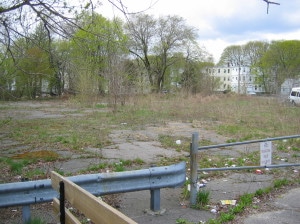Due to high environmental cleanup costs communities lose millions in economic revenue and community revitalization from brownfield sites. Thankfully most states have brownfield redevelopment incentive programs to encourage abandoned sites to be developed.

A big election-day issue here in Massachusetts was whether voters would maintain the state’s position on developing a gaming industry and, in turn, approve the construction of three large casino facilities in different parts of the state. After a long highly contested debate, voters supported keeping the law as is and the plan for three casinos in Massachusetts will continue.
While casinos have faced tough opposition in many communities around the state, it is arguable that, for one community, the promise to transform a deserted waste-land into prosperous waterfront property, is what swayed many local voters to support this initiative.
Wynn Resorts, the company with plans to turn a polluted former chemical plant in Everett into a new $1.6 billion resort, has a hefty environmental cleanup project ahead before it can even begin to pour the foundation.
Officials have said that the 30-acre site, on the banks of the Mystic River, has housed four different chemical companies dating back to about 1868. Environmental tests have shown that the soil, groundwater and river sediment at the site contain substantial levels of arsenic, lead, copper and other heavy metals.
At a community meeting shortly before the elections, Wynn Resort officials promised the cleanup efforts, which are estimated to take about three to four months and cost roughly $30 million, will meet the “highest standards” set by federal environmental regulators.
Unfortunately, the high cost of environmental cleanup for many communities means these opportunities get ignored thus costing the community significant amounts of money in economic revenue and community revitalization. But thankfully, most communities don’t have to wait for a billion-dollar development project to come to their doorstep. Many states have brownfield redevelopment incentive programs to encourage abandoned sites to be developed.
The Brownfields Act of Massachusetts provides financial incentives to attract new investment in these properties while ensuring that the Commonwealth’s environmental standards are met.
Redevelopment of a brownfield site can be a significant undertaking for a municipality, but it can have an even more significant pay-off in the end. These projects often benefit from pre-planning on the part of the municipality, which may include a brownfield site inventory of the community, a review of existing bylaws or ordinances, and some advance visioning for the area in which a brownfield site is located. It may require a public-private partnership to bring it to fruition, and will benefit from public outreach and involvement. Municipalities can work to foster these relationships with the neighborhoods in which brownfields are located and with potential investors and developers.
For communities interested in starting a Brownfield Redevelopment Project, the Commonwealth of Massachusetts has a comprehensive tool kit: https://www.mass.gov/envir/smart_growth_toolkit/pages/mod-brownfields.html. For those outside of Massachusetts, visit your state website for details on incentive programs available.
